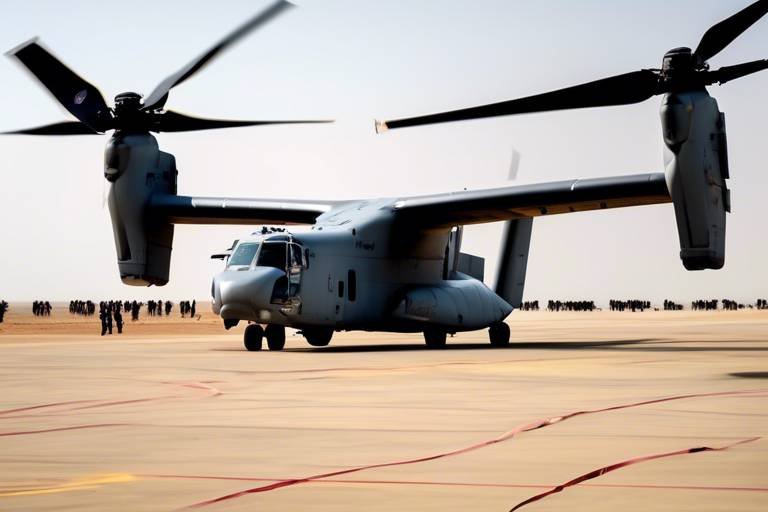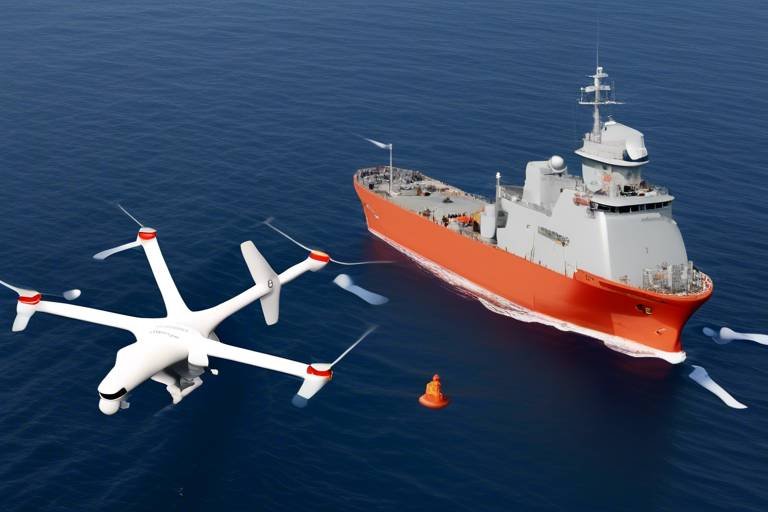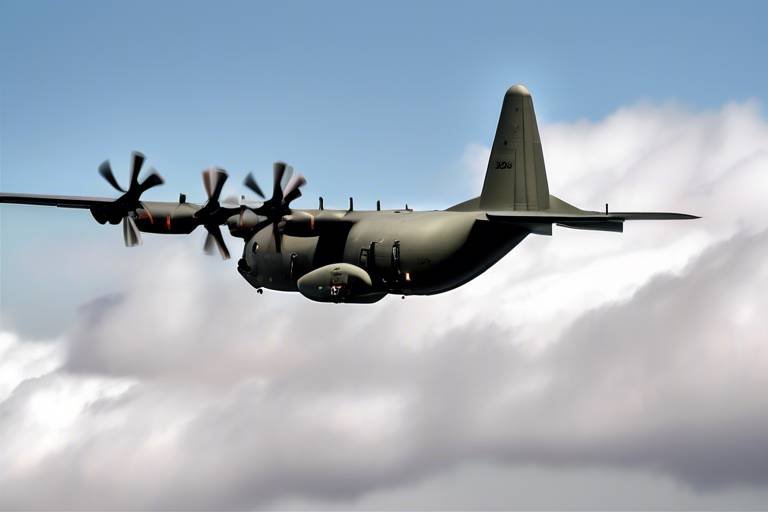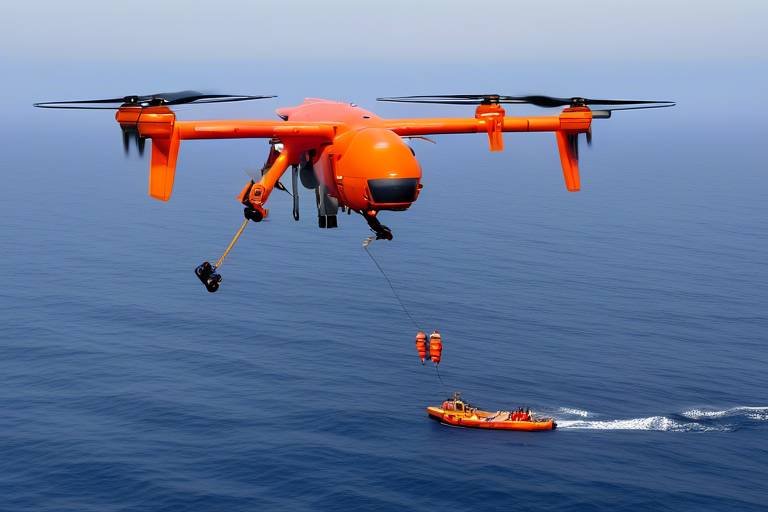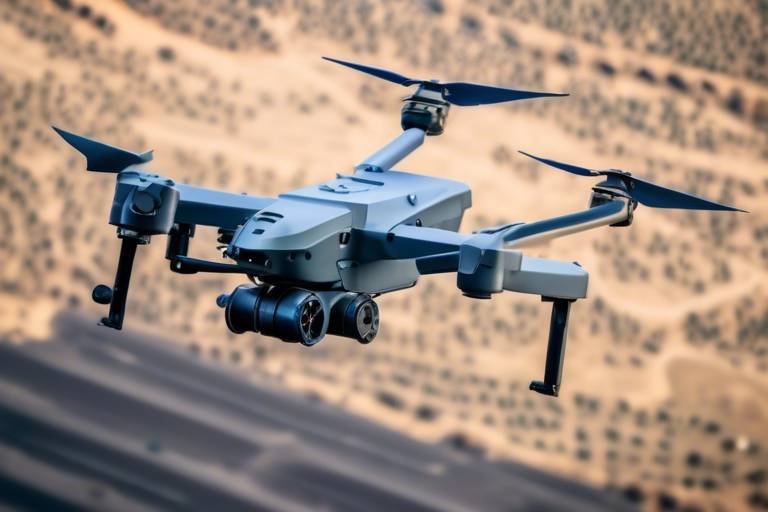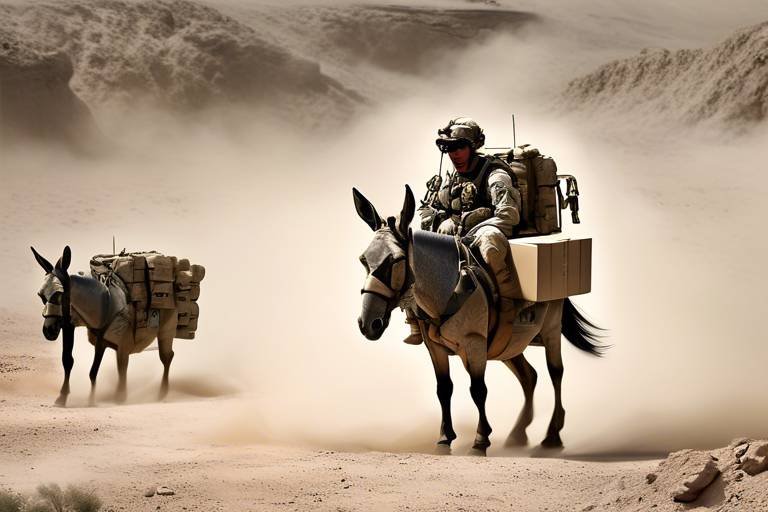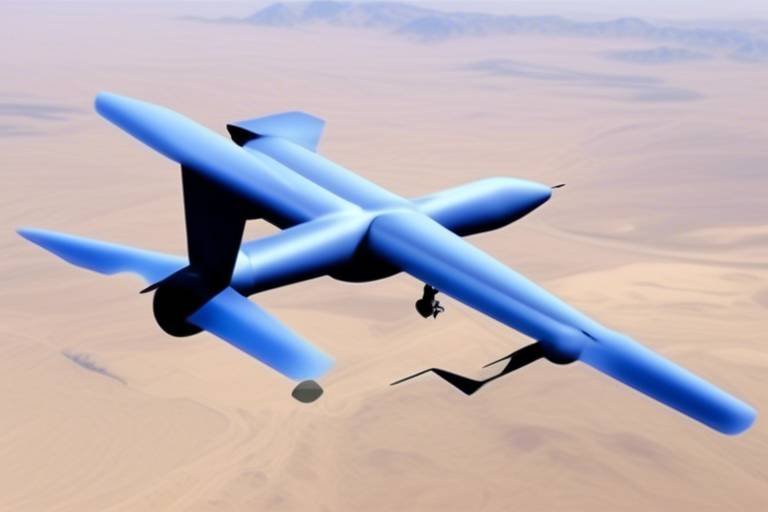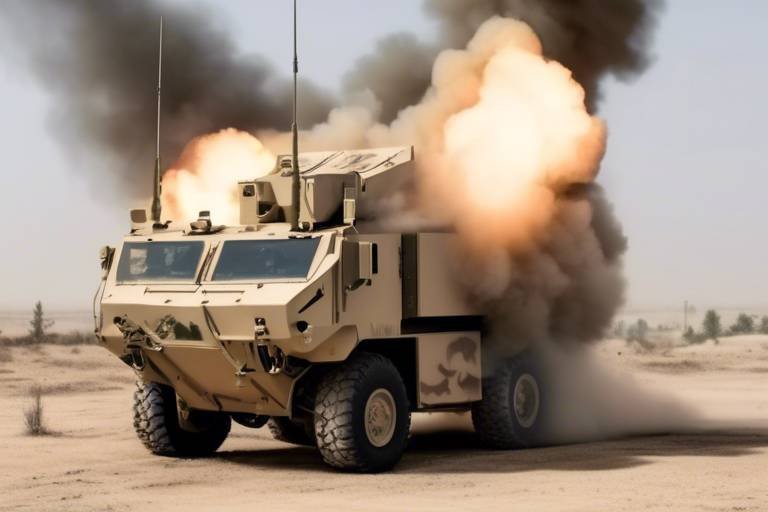Assessing the Integration of the NEMO Mortar with Armored Vehicles
This article explores the capabilities, benefits, and challenges of integrating the NEMO mortar system into armored vehicles, highlighting operational effectiveness and tactical advantages in modern warfare scenarios.
The NEMO mortar system is a versatile, lightweight weapon designed for rapid deployment. Built to enhance the firepower of armored vehicles, the NEMO mortar boasts a range of impressive specifications that are crucial in combat situations. With a caliber of 120mm, it offers significant firepower while maintaining a compact design that allows for easy integration into various armored platforms. This system is not just about firepower; it is equipped with advanced targeting systems that improve accuracy and reduce the time required for deployment.
Integrating the NEMO mortar into armored vehicles provides several tactical advantages that are hard to overlook. One of the most significant benefits is the increased mobility it offers. Armored vehicles equipped with the NEMO mortar can quickly reposition on the battlefield, ensuring they can respond to threats as they arise. This mobility is complemented by improved fire support capabilities, enabling ground forces to deliver devastating firepower when needed most. Furthermore, the integration enhances the survivability of troops, as they can now provide cover while remaining protected within their armored vehicles.
The NEMO mortar significantly boosts the firepower of armored vehicles. With a range of up to 10 kilometers, it allows for effective engagement of targets at a distance, which can be a game-changer in combat scenarios. This increased firepower not only enhances the overall combat effectiveness of the unit but also instills a psychological advantage over adversaries, who must contend with the threat of indirect fire from a protected platform. The ability to fire various types of munitions, including high-explosive and smoke rounds, further diversifies the tactical options available to commanders on the ground.
The integration of the NEMO mortar system allows for rapid deployment and maneuverability, which is essential in dynamic combat scenarios. Imagine a battlefield where conditions change in the blink of an eye; having a weapon system that can be quickly positioned to support ground troops is invaluable. The NEMO mortar can be loaded and fired in less than a minute, allowing units to provide timely support even in the heat of battle. This capability ensures that ground forces are never left without cover, enabling them to maintain the initiative and control over the battlefield.
While there are numerous benefits to integrating the NEMO mortar into armored vehicles, it's essential to acknowledge the challenges that come with it. Technological, logistical, and operational hurdles must be addressed for successful implementation. One of the primary concerns is ensuring compatibility with existing armored vehicle systems. The integration process may reveal technical limitations that require innovative solutions, such as software updates or hardware modifications, to ensure the mortar system operates seamlessly with the vehicle's systems.
Technical challenges can arise during the integration process, particularly regarding the compatibility of the NEMO mortar with existing armored vehicle systems. For instance, the vehicle's onboard computer systems may need upgrades to accommodate the mortar's advanced targeting capabilities. Additionally, specialized training for personnel is essential to ensure they can effectively operate and maintain the system. Without proper training, the potential of the NEMO mortar may not be fully realized, which can hinder operational effectiveness.
Logistical challenges play a crucial role in the successful integration of the NEMO mortar. Supply chain management is vital to ensure that the necessary ammunition and parts are available when needed. Maintenance is another critical aspect, as the mortar system requires regular checks and servicing to remain operational. Moreover, adequate support infrastructure must be established to facilitate the integration process, including training facilities and maintenance hubs. Addressing these logistical considerations is essential for maximizing the benefits of the NEMO mortar system.
Looking ahead, the future of the NEMO mortar system in armored vehicles is promising. Ongoing advancements in technology are likely to enhance the capabilities of this system, making it even more effective on the battlefield. Potential upgrades could include improved targeting systems, enhanced ammunition types, and better integration with other military systems. As warfare continues to evolve, the role of mortars like the NEMO will undoubtedly adapt, ensuring they remain a vital asset in modern military operations.
- What makes the NEMO mortar system unique? The NEMO mortar system is unique due to its lightweight design, rapid deployment capabilities, and advanced targeting systems, making it highly effective in modern warfare.
- How does the NEMO mortar improve armored vehicle capabilities? By integrating the NEMO mortar, armored vehicles gain increased firepower and mobility, allowing them to support ground forces more effectively in combat scenarios.
- What are the main challenges of integrating the NEMO mortar? The main challenges include technical compatibility with existing systems and logistical issues related to supply chain management and maintenance.
- What is the future of the NEMO mortar system? The future looks bright, with ongoing advancements expected to enhance its capabilities and adapt to the evolving nature of warfare.

Overview of the NEMO Mortar System
The NEMO mortar system is a cutting-edge, versatile weapon that has redefined how modern militaries approach indirect fire support. Developed with a focus on rapid deployment and operational flexibility, the NEMO system is not just another piece of artillery; it is a game-changer on the battlefield. This mortar is designed to enhance the firepower of armored vehicles, providing them with the capability to deliver precise and powerful strikes against enemy positions, all while maintaining mobility and survivability.
One of the standout features of the NEMO mortar is its lightweight design, which allows it to be mounted on various platforms, including wheeled and tracked armored vehicles. This adaptability means that forces can utilize the NEMO system in a wide range of operational environments, from urban warfare to open battlefields. The system's specifications include a caliber of 120mm, enabling it to fire a range of munitions, including high-explosive, smoke, and illumination rounds. This versatility ensures that ground forces can respond to different threats effectively.
In addition to its impressive firepower, the NEMO mortar system is equipped with advanced targeting technology, which significantly enhances its accuracy. The integration of computerized fire control systems allows for quick adjustments based on real-time battlefield conditions, ensuring that each shot counts. This capability is crucial in modern warfare, where the speed of decision-making can determine the outcome of engagements.
Furthermore, the NEMO mortar system is designed for rapid deployment. In combat situations, time is of the essence, and the ability to quickly position the mortar can make all the difference. The system can be ready to fire within minutes of arriving on the scene, providing immediate support to ground troops who may be under fire. This quick response capability is complemented by the mortar's ability to fire multiple rounds in quick succession, offering sustained fire support when needed.
To illustrate the specifications and features of the NEMO mortar system, here is a summary table:
| Feature | Specification |
|---|---|
| Caliber | 120mm |
| Weight | Approx. 1,600 kg |
| Range | Up to 10 km |
| Rate of Fire | Up to 16 rounds per minute |
| Mounting Options | Wheeled and tracked vehicles |
In conclusion, the NEMO mortar system is a remarkable addition to the arsenal of modern armored vehicles. Its combination of lightweight design, advanced targeting capabilities, and rapid deployment makes it a vital asset for ground forces. As warfare continues to evolve, systems like the NEMO mortar will play an increasingly important role in ensuring operational effectiveness and tactical superiority.
- What is the primary purpose of the NEMO mortar system?
The NEMO mortar system is designed to provide indirect fire support to ground forces, enhancing the firepower and tactical capabilities of armored vehicles. - How quickly can the NEMO mortar be deployed?
The NEMO mortar can be ready to fire within minutes of arriving on the battlefield, ensuring timely support for troops in need. - What types of munitions can the NEMO mortar fire?
The system can fire a variety of munitions, including high-explosive, smoke, and illumination rounds, making it versatile for different combat scenarios. - Is the NEMO mortar compatible with all armored vehicles?
While the NEMO mortar is designed to be adaptable, compatibility may vary depending on the specific vehicle platform.

Benefits of Integration
Integrating the NEMO mortar system into armored vehicles is not just a tactical enhancement; it's a game-changer for modern warfare. Imagine a battlefield where mobility, firepower, and survivability are not just concepts but realities. The NEMO mortar brings these elements together, offering a range of benefits that enhance the operational effectiveness of ground forces. One of the most significant advantages is the increased firepower it provides. With its impressive caliber and range, the NEMO mortar can deliver devastating fire support that is crucial in combat scenarios. This means that armored vehicles equipped with this system can engage targets with precision and effectiveness, greatly improving their combat capabilities.
Moreover, the integration of the NEMO mortar system allows for remarkable mobility and deployment advantages. In fast-paced combat environments, the ability to reposition quickly can mean the difference between success and failure. Armored vehicles fitted with the NEMO mortar can be rapidly deployed to support ground troops, ensuring that fire support is available when and where it is needed most. This agility not only enhances the effectiveness of the armored units but also contributes to the overall tactical flexibility of military operations.
Another critical benefit of integrating the NEMO mortar is the enhanced survivability it offers. In modern warfare, armored vehicles face a plethora of threats, from anti-tank missiles to improvised explosive devices (IEDs). By equipping these vehicles with the NEMO mortar, forces can engage enemies from a distance, reducing the risk of exposure to direct fire. This capability allows units to maintain a safe distance while still delivering effective firepower, ultimately increasing the chances of mission success and the safety of personnel involved.
To summarize, the integration of the NEMO mortar system into armored vehicles delivers a trifecta of benefits that are vital in contemporary combat scenarios:
- Increased Firepower: Enhances combat effectiveness through superior range and caliber.
- Mobility and Deployment: Facilitates quick repositioning in dynamic environments.
- Enhanced Survivability: Reduces exposure to threats while providing effective support.
These advantages make the NEMO mortar not just an addition to armored vehicles but a crucial element of their operational strategy. As military tactics evolve, the importance of integrating such advanced systems cannot be overstated. The NEMO mortar stands out as a prime example of how modern technology can redefine the capabilities of traditional armored units.
Q: What is the NEMO mortar system?
A: The NEMO mortar system is a lightweight, versatile weapon designed for rapid deployment, enhancing the firepower of armored vehicles in combat.
Q: How does integrating the NEMO mortar improve firepower?
A: The NEMO mortar offers a higher caliber and extended range, allowing armored vehicles to engage targets more effectively and from a safer distance.
Q: What are the mobility benefits of the NEMO mortar?
A: The integration of the NEMO mortar allows for quick repositioning of armored vehicles, ensuring timely fire support in dynamic combat situations.
Q: Does the NEMO mortar enhance the survivability of armored vehicles?
A: Yes, by enabling distant engagement of threats, the NEMO mortar reduces the risk of exposure to direct fire, increasing the safety of personnel.

Increased Firepower
The integration of the NEMO mortar system into armored vehicles represents a significant leap in battlefield capabilities, particularly in terms of firepower. This lightweight yet formidable weapon is designed to deliver devastating fire support, enhancing the overall combat effectiveness of ground forces. With a caliber of 120mm, the NEMO mortar can engage targets at impressive ranges, typically around 8 to 12 kilometers, depending on the type of munition used. This extended reach allows armored units to provide indirect fire support while remaining safely out of the enemy's line of sight.
One of the standout features of the NEMO mortar system is its versatility. It can fire a variety of munitions, including high-explosive, smoke, and illumination rounds. This flexibility enables commanders to tailor their fire support to meet the specific needs of the battlefield. For instance, when engaging enemy positions, the use of high-explosive rounds can maximize damage, while smoke rounds can obscure the movements of friendly troops, providing a tactical advantage.
Moreover, the NEMO mortar can be operated remotely, which is a game-changer in modern warfare. This capability minimizes the risk to personnel and allows for rapid adjustments based on real-time battlefield intelligence. Imagine a scenario where ground troops are pinned down by enemy fire; with the NEMO mortar, commanders can quickly reposition the weapon and deliver precise fire support without exposing soldiers to unnecessary danger.
To illustrate the impact of the NEMO mortar on firepower, consider the following table that compares the NEMO system with traditional mortar systems:
| Feature | NEMO Mortar | Traditional Mortar |
|---|---|---|
| Caliber | 120mm | 81mm / 120mm |
| Range | 8-12 km | 5-10 km |
| Munitions Variety | High-explosive, smoke, illumination | Limited types |
| Remote Operation | Yes | No |
As you can see, the NEMO mortar system not only offers enhanced range and versatility but also introduces advanced operational capabilities that traditional systems lack. This increased firepower can be the difference between victory and defeat in high-stakes combat scenarios. The ability to deliver precise, effective fire support rapidly can turn the tide of battle, allowing armored units to engage enemies effectively while maintaining a strategic advantage.
In conclusion, the NEMO mortar system significantly amplifies the firepower of armored vehicles, making them more formidable on the battlefield. By combining advanced technology with versatile munitions, it empowers ground forces to respond dynamically to evolving threats, ensuring they remain a step ahead of the enemy.
- What is the range of the NEMO mortar system? The NEMO mortar can engage targets at ranges of 8 to 12 kilometers, depending on the munition used.
- Can the NEMO mortar be operated remotely? Yes, the NEMO mortar system features remote operation capabilities, enhancing safety and tactical flexibility.
- What types of munitions can the NEMO mortar fire? The NEMO mortar can fire a variety of munitions, including high-explosive, smoke, and illumination rounds.

Mobility and Deployment
The integration of the NEMO mortar system into armored vehicles revolutionizes the way military forces approach mobility and deployment on the battlefield. Imagine a scenario where traditional artillery is too slow to respond to rapidly changing combat conditions; this is where the NEMO mortar shines. Its lightweight design and versatile mounting options allow for quick repositioning, ensuring that ground forces receive timely fire support when they need it most.
One of the standout features of the NEMO mortar is its ability to be mounted on various platforms, from main battle tanks to lighter armored vehicles. This flexibility means that commanders can choose the right vehicle for the mission at hand, enhancing operational effectiveness. For instance, a unit may deploy a NEMO-equipped vehicle in a rapid assault scenario, allowing it to move swiftly across the terrain while providing cover fire for advancing troops. The mortar's design enables it to fire while the vehicle is still in motion, which is a game-changer in fast-paced engagements.
Moreover, the NEMO mortar system is equipped with advanced targeting technology that further enhances its deployment capabilities. With integrated fire control systems, crews can quickly acquire targets and engage them with precision. This capability not only improves the effectiveness of the mortar but also minimizes the time spent in vulnerable positions. In the heat of battle, every second counts, and the NEMO mortar allows for rapid engagement without compromising the safety of the crew.
To illustrate the advantages of mobility and deployment, consider the following table that summarizes key features of the NEMO mortar system:
| Feature | Benefit |
|---|---|
| Lightweight Design | Facilitates rapid movement and deployment |
| Versatile Mounting | Can be integrated with various armored platforms |
| Firing on the Move | Allows for continuous support during maneuver operations |
| Advanced Targeting Systems | Enhances accuracy and reduces response time |
In essence, the NEMO mortar system transforms armored vehicles into agile and formidable platforms capable of delivering firepower with unprecedented speed. This is particularly crucial in modern warfare, where the dynamics of combat can shift in an instant. The ability to deploy quickly and effectively can mean the difference between victory and defeat.
As military operations continue to evolve, the integration of systems like the NEMO mortar will be essential for maintaining tactical superiority on the battlefield. By enhancing mobility and ensuring rapid deployment, ground forces can stay one step ahead of their adversaries, securing their objectives with confidence.
- What is the NEMO mortar system? The NEMO mortar system is a lightweight, versatile weapon designed for rapid deployment, enhancing the firepower of armored vehicles.
- How does the NEMO mortar improve mobility? Its lightweight design and versatile mounting options allow for quick repositioning and the ability to fire while in motion.
- Can the NEMO mortar be integrated with any armored vehicle? Yes, it can be mounted on various platforms, making it adaptable to different mission requirements.
- What are the benefits of advanced targeting systems in the NEMO mortar? These systems enhance accuracy and reduce response time, allowing for effective engagement of targets.

Challenges of Integration
While the integration of the NEMO mortar system into armored vehicles offers significant tactical advantages, it does not come without its challenges. One of the primary hurdles is the technical limitations that can arise during the integration process. For instance, compatibility issues with existing armored vehicle systems can create complications that may hinder effective operation. Imagine trying to fit a square peg into a round hole; if the systems aren't designed to work together seamlessly, it can lead to frustrating delays and inefficiencies on the battlefield.
Moreover, the integration of advanced systems like the NEMO mortar often necessitates specialized training for personnel. Crews must be well-versed not only in operating the mortar itself but also in understanding how it interacts with the vehicle’s systems. This training can be time-consuming and resource-intensive, potentially diverting focus away from other essential operational tasks.
Logistical challenges also play a crucial role in the successful integration of the NEMO mortar. The need for a robust supply chain cannot be overstated. Consider the complexities involved in maintaining and supplying ammunition for a system that may be deployed in various operational theaters. This requires not only a reliable means of transport but also a well-planned inventory management system to ensure that the necessary supplies are always on hand.
In addition, the integration process may necessitate modifications to existing armored vehicles, which can lead to increased maintenance demands. As vehicles are retrofitted to accommodate the NEMO mortar, they may require additional upkeep, which can strain resources. For example, if a vehicle previously required a certain amount of maintenance, adding new systems may double or even triple that requirement. This can complicate operational readiness and affect the overall effectiveness of ground forces.
Lastly, the operational environment poses its own set of challenges. The NEMO mortar system is designed for rapid deployment, but the realities of combat can be unpredictable. Factors such as terrain, weather, and enemy actions can all impact the effectiveness of the mortar system. Therefore, commanders must be agile and ready to adapt their strategies in real-time, which can be a daunting task in high-pressure situations.
- What are the main technical challenges in integrating the NEMO mortar?
Technical challenges primarily include compatibility with existing vehicle systems and the need for specialized training for operators. - How does logistical support affect the integration of the NEMO mortar?
A robust supply chain is essential for maintaining ammunition and ensuring that the necessary resources are available for effective operation. - What impact does the operational environment have on the NEMO mortar's effectiveness?
Factors such as terrain, weather, and enemy actions can significantly influence how effectively the mortar system can be deployed in combat scenarios.

Technical Limitations
When it comes to integrating the NEMO mortar system into armored vehicles, there are several that need to be addressed to ensure effective operation. One of the primary challenges is the compatibility with existing vehicle systems. Each armored vehicle has its own unique architecture, and the integration of the NEMO mortar must be seamless to avoid operational disruptions. This means that engineers must carefully assess the vehicle's electronic systems, weight distribution, and structural integrity to accommodate the mortar without compromising the vehicle's performance.
Moreover, the training requirements for personnel operating the NEMO mortar can also pose a significant challenge. Unlike standard weapon systems, the NEMO mortar requires specialized knowledge in both its operation and maintenance. This necessitates comprehensive training programs that can be time-consuming and resource-intensive. The need for skilled operators can limit the speed at which the integration process can be executed, especially if the armed forces are already stretched thin with existing commitments.
Another technical limitation involves the communication systems used within armored vehicles. Effective coordination between the mortar crew and ground troops is crucial for maximizing the NEMO's effectiveness in combat. However, if the communication systems are outdated or incompatible, it can lead to delays in response times and miscommunication during critical operations. This highlights the importance of ensuring that all systems are modernized and capable of seamless interaction.
Furthermore, the weight and balance of the NEMO mortar system need careful consideration. Armored vehicles are designed with specific weight thresholds, and adding the mortar could potentially exceed these limits, affecting mobility and agility. Engineers must conduct thorough assessments to determine the optimal placement of the mortar to maintain the vehicle's balance and performance in various terrains.
In conclusion, while the integration of the NEMO mortar system into armored vehicles offers significant advantages, it is essential to navigate these technical limitations carefully. Addressing compatibility issues, ensuring adequate training, modernizing communication systems, and considering weight distribution are all critical factors that must be managed effectively to harness the full potential of this advanced weapon system.
- What is the NEMO mortar system?
The NEMO mortar system is a lightweight, versatile weapon designed for rapid deployment, enhancing the firepower of armored vehicles in combat scenarios.
- What are the main challenges of integrating the NEMO mortar?
Challenges include compatibility with existing vehicle systems, the need for specialized training for operators, and ensuring effective communication between units.
- How does the NEMO mortar improve combat effectiveness?
It significantly boosts firepower, allowing for rapid deployment and support in dynamic combat situations, which is crucial for ground forces.
- What considerations are there regarding logistics?
Logistical challenges involve supply chain management, maintenance, and ensuring adequate support infrastructure for the mortar system.

Logistical Considerations
When we think about integrating the NEMO mortar system into armored vehicles, we often focus on the flashy aspects like firepower and mobility. However, the are just as crucial to ensure that this integration is successful and effective in real-world scenarios. Imagine trying to run a marathon without proper training or nutrition; that's what it feels like to deploy a powerful weapon system without a solid logistical framework.
First and foremost, supply chain management plays a pivotal role in the successful deployment of the NEMO mortar. This system requires a steady flow of ammunition, maintenance parts, and other essential supplies. The complexity of operations in modern warfare means that these supplies must be readily available, often in unpredictable environments. If ground forces are left waiting for critical supplies, it can greatly diminish their operational effectiveness, much like a car running out of gas in the middle of a race.
Moreover, the need for maintenance cannot be overstated. Armored vehicles equipped with the NEMO mortar system will require specialized maintenance protocols to ensure that both the vehicle and the mortar are functioning optimally. This means that personnel must be adequately trained not just to operate the system, but also to perform routine checks and repairs. Without this training, the risk of malfunction increases, potentially leaving troops vulnerable in high-stakes situations. To illustrate, consider a high-performance sports car; without a skilled mechanic to tune it, its performance will suffer.
Another logistical hurdle is the support infrastructure needed for effective integration. This includes everything from transportation logistics to the availability of repair facilities. For instance, if a unit is deployed in a remote area, access to repair parts and technical support can be a real challenge. The military must ensure that these units are not only equipped with the NEMO mortar but also have the necessary infrastructure in place to support its operation. It's like building a house without a solid foundation; it might look good on the outside, but it won't stand the test of time.
In addition to these considerations, the integration of the NEMO mortar into armored vehicles also raises questions about training and personnel readiness. Soldiers must be trained not only in the operation of the mortar itself but also in the logistical operations that support its use. This dual focus on both combat readiness and logistical efficiency is essential for maximizing the effectiveness of the NEMO mortar. Think of it as a two-sided coin; you can't have one without the other if you want to achieve success on the battlefield.
In conclusion, while the NEMO mortar system offers significant advantages when integrated into armored vehicles, the logistical considerations are a critical component that cannot be overlooked. From supply chain management to maintenance and training, each aspect plays a vital role in ensuring that this powerful weapon is used effectively. Addressing these logistical challenges head-on will help military forces leverage the full potential of the NEMO mortar system, turning it into a game-changer in modern warfare.
- What is the NEMO mortar system?
The NEMO mortar system is a lightweight, versatile weapon designed for rapid deployment and enhanced firepower in combat situations. - What are the main benefits of integrating NEMO with armored vehicles?
Integration enhances mobility, fire support, and survivability, making ground forces more effective in various operational environments. - What logistical challenges are associated with the NEMO mortar?
Challenges include supply chain management, maintenance, and ensuring adequate support infrastructure for effective operation. - How does training impact the use of the NEMO mortar?
Proper training is essential for personnel to effectively operate the mortar and manage logistical operations, ensuring optimal performance in the field.

Future Prospects and Developments
The future of the NEMO mortar system in armored vehicles is not just bright; it's positively radiant with possibilities. As military technology evolves at a breakneck pace, the integration of advanced systems like NEMO is poised to redefine how ground forces engage in combat. With increasing demands for versatility and rapid response in modern warfare, the NEMO mortar system is set to undergo significant enhancements that will bolster its operational effectiveness.
One of the most exciting prospects for the NEMO mortar system is the potential incorporation of smart technology. Imagine a mortar that can adjust its firing parameters in real-time, taking into account environmental factors and enemy movements. This level of adaptability could dramatically increase accuracy and reduce collateral damage, making it a game-changer on the battlefield. Ongoing research and development efforts focus on integrating precision-guided munitions (PGMs) with the NEMO system, which would allow for pinpoint strikes against high-value targets while minimizing risks to friendly forces.
Moreover, the integration of unmanned systems is another frontier that holds immense promise. Picture the NEMO mortar being operated remotely or even autonomously, allowing for operations in high-risk environments without endangering personnel. This capability would not only enhance the safety of troops but also enable more complex tactical maneuvers. As drones and robotic systems become increasingly sophisticated, pairing them with the NEMO mortar could provide commanders with unparalleled flexibility in combat scenarios.
Additionally, ongoing advancements in communication systems will play a crucial role in the future of the NEMO mortar. Enhanced data sharing between units can facilitate coordinated strikes, ensuring that mortar fire is synchronized with the movements of ground troops and other assets. This level of integration will be vital in achieving joint operations where multiple branches of the military work together seamlessly.
However, the path forward is not without its challenges. As the NEMO system evolves, it will require continuous updates to training programs for personnel to effectively utilize these new technologies. Logistical support will also need to adapt, ensuring that the necessary infrastructure is in place to maintain and operate these advanced systems. The military must invest in both hardware and human resources to ensure that the NEMO mortar system remains a formidable asset in the years to come.
In summary, the future prospects for the NEMO mortar system within armored vehicles are not just about maintaining the status quo; they are about revolutionizing the way ground forces operate. With advancements in smart technology, unmanned systems, and enhanced communication, the NEMO mortar is set to become an even more critical component of modern warfare. As we look ahead, the potential for innovation in this area is limited only by our imagination.
- What is the NEMO mortar system?
The NEMO mortar system is a lightweight, versatile weapon designed for rapid deployment, enhancing the firepower of armored vehicles. - How does the integration of NEMO improve combat effectiveness?
It significantly boosts firepower, increases mobility, and enhances the survivability of ground forces in various operational environments. - What are the future developments expected for the NEMO system?
Future developments include the integration of smart technology, unmanned systems, and improved communication capabilities. - What challenges does the NEMO system face for integration?
Challenges include technical limitations, logistical considerations, and the need for specialized training.
Frequently Asked Questions
- What is the NEMO mortar system?
The NEMO mortar system is a state-of-the-art, lightweight mortar designed for rapid deployment in combat situations. It enhances the firepower of armored vehicles, making them more effective on the battlefield.
- How does integrating the NEMO mortar improve armored vehicles?
Integrating the NEMO mortar significantly boosts the firepower, mobility, and survivability of armored vehicles. It allows for quick positioning in dynamic combat scenarios, ensuring timely support for ground troops.
- What are the main benefits of the NEMO mortar system?
The key benefits include increased firepower, improved support for ground forces, and enhanced mobility. This versatility makes it a valuable asset in various operational environments.
- Are there any challenges in integrating the NEMO mortar with armored vehicles?
Yes, there are challenges such as technical limitations related to compatibility, logistical considerations for maintenance and supply, and the need for specialized training for personnel.
- What technical limitations might arise during integration?
Potential technical limitations include compatibility issues with existing systems and the requirement for upgrades to vehicle electronics or infrastructure to support the mortar system.
- How does logistics impact the integration of the NEMO mortar?
Logistics plays a crucial role, as it involves managing supply chains for ammunition, maintenance of the mortar systems, and ensuring that adequate support infrastructure is in place for operational readiness.
- What does the future hold for the NEMO mortar system?
The future looks promising with ongoing advancements and potential upgrades. The evolving role of mortars in modern warfare suggests that innovations will continue to enhance their effectiveness in combat scenarios.


